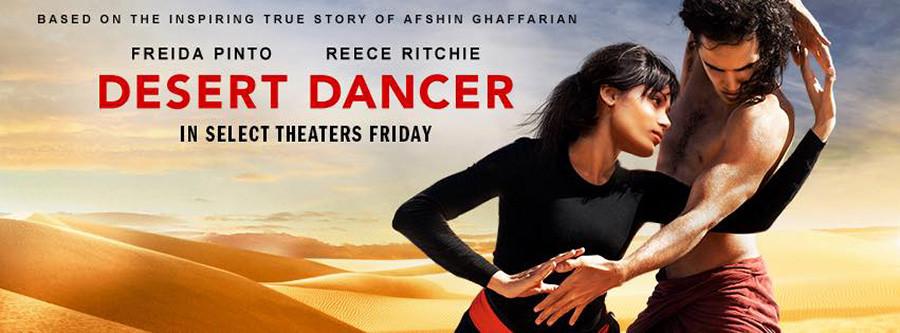Biopic does not live up to subject
April 7, 2015
Recent international events, including those involving Charlie Hebdo, Pussy Riot and the North Korean threats against Sony, have shown that the basic human right to freedom of expression is under attack. “Desert Dancer,” a new film directed by Richard Raymond, adds another story to the pattern of oppression from Iran — a country with a deep history of censorship.
The movie follows Afshin Ghaffarian, an Iranian dancer who risked his life to form an underground dance troupe and put on a performance in the desert, despite surveillance, threats and abuse from the Iranian government. The story begins when Afshin, played by Reece Ritchie, enters the University of Tehran during the 2009 presidential elections.
After gaining illegal Internet access, Afshin searches for dance videos and tutorials, showing them to his new friends, including Tom Cullen of “Downtown Abbey” as Ardavan, who agree to secretly practice dance together. Their law breaking seems mostly harmless until the mysterious Elaheh (Freida Pinto) follows the group to their hideout and auditions for the troupe. They are reluctant to let this stranger in, but her talent and helpfulness earns the group’s trust.
At the same time, the elections lead to protests and government crackdowns on illegal activities, including artistic expression. Afshin and his friends plan a performance in the desert, but their defiance puts government officials on Afshin’s tail, and he must escape Iran before he is killed. Matters are further complicated by Elaheh’s heavy drug use.
The real-life Ghaffarian is a hero whose story deserves to be told, but one wishes it was in a film more dynamic than this one. Much of the acting feels stiff and flat, too focused on maintaining a respectful Iranian accent than being emotive in a scene. The only actor who evokes nuanced emotion is Pinto, but even she is limited by the simplistic writing and weak characterization in a subplot that is at best one of a rote love interest and at worst a reductive portrait of addiction.
In terms of biopics, this one picks a riveting time in Ghaffarian’s life to dramatize, but the plot turns are too easily
anticipated and thus lose their emotional impact. Viewers’ sympathies remain with the protagonist, but it is difficult to be immersed in his escape knowing that he leaves behind friends who sacrificed their safety to protect him.
Some of the film’s problems are masked by well filmed dance sequences. The titular desert dance, for example, is a prolonged centerpiece for the film that is symbolic and lovely to watch. Raymond has an eye for capturing movement in abstract, lyrical shots, even though the music selection sometimes distracts from the subtlety of the camera work and the dancing.
“Desert Dancer” is a film that, based only on the merit of its subject matter, deserves attention. In practice, the film is an unexceptional drama, and an hour of Internet research into Ghaffarian and the censorship in Iran is probably a more useful and fulfilling way to educate yourself on the important issues contained within.
“Desert Dancer” opens on April 10.
A version of this article appeared in the Tuesday, April 7 print edition. Email Ife Olujobi at [email protected]



























































































































































